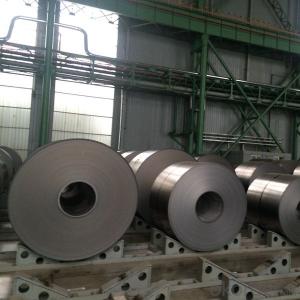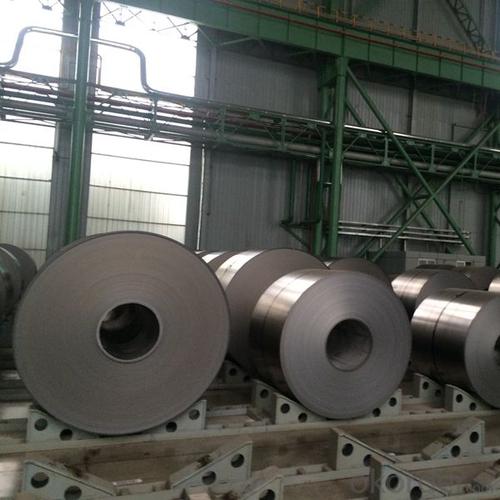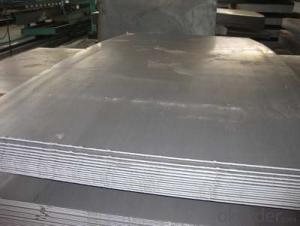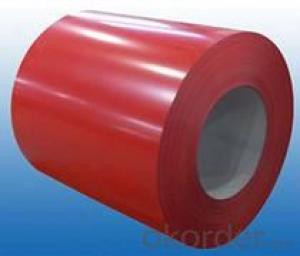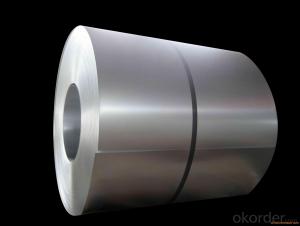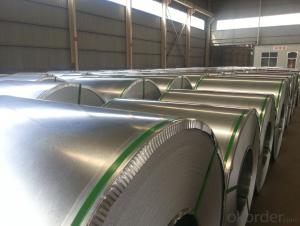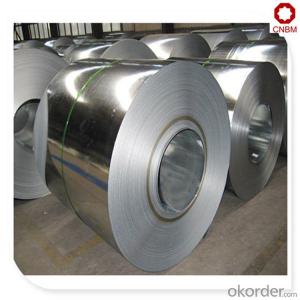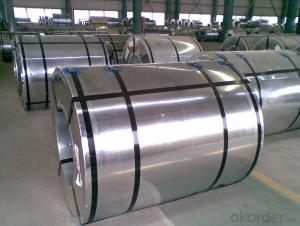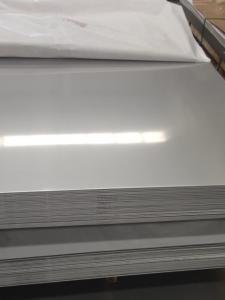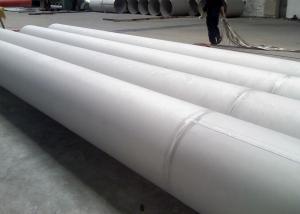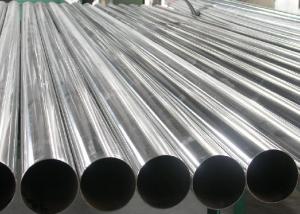DX51 Zinc Cold Rolled Hot Dipped Galvanized Steel Coil Sheet Plate Strip
- Loading Port:
- Tianjin
- Payment Terms:
- TT OR LC
- Min Order Qty:
- 50 m.t.
- Supply Capability:
- 20000 m.t./month
OKorder Service Pledge
OKorder Financial Service
You Might Also Like
Specification
DESCRIPTION FOR GALVANIZED STEEL COILS:
Mian Quality Standard | JIS G3302, EN10346, DIN17162, ASTM A653/653M, GB2518 |
Process | hot dip galvanizing |
Process Speed | 1#. Max 120m/min, 2#. Max 130m/min |
Thickness | 1#. 0.25mm upto 1.20mm, 2#. 0.25mm upto 1.0mm |
Width | 900mm upto 1300mm |
Surface Finish | zero spangles, skinpassed, oiled,chromated, tension level, |
Coating | zinc layer mass on both sides from 30 g/m2 upto 180g/m2 |
Yield Strength | 220Mpa upto 750Mpa |
Weight per Coil | max 15,000kg |
Inner Diameter | φ 508mm |
Outer Diameter | max φ 2,050mm |
Finished Internal Diameter | Φ 508mm or φ 610mm |
Finished Coil Weight | 1#. max 10,000kg, 2#. max 15,000kg |
Packing | Mill's Export Standard Packing |
Capacity | 300,000 tons/year |
EXPORT STANDARD FOR GALVANIZED STEEL COILS:
-Axial and circumferential steel straps with seal (4 steel straps each)
-VCI Anti-rust kraft paper
-Water-proofing plastic
-Pearl wool (coil surface)
-Steel cover (coil surface/bore)
-Plastic cover (coil sides)
-Inside and outside corner protectors
Or According customers' requirements(Usually only for domestic)
PACKAGING &DELIVERY FOR GALVANIZED STEEL COILS:
Packaging Detail Standard export packing or following customer's demand
Delivery Time: Within 30-40 days after deposit or according to the order quantity
PACKAGING &DELIVERY FOR GALVANIZED STEEL COILS:
1.Big thickness:by bulk vessel
2.Small thickness:packed by steel strips and shipped by container
3.According to the requirements of customers'
TRADE TERMS FOR GALVANIZED STEEL COILS:FOB, CFR, CIF
DETAILED PICTURES FOR GALVANIZED STEEL COILS:
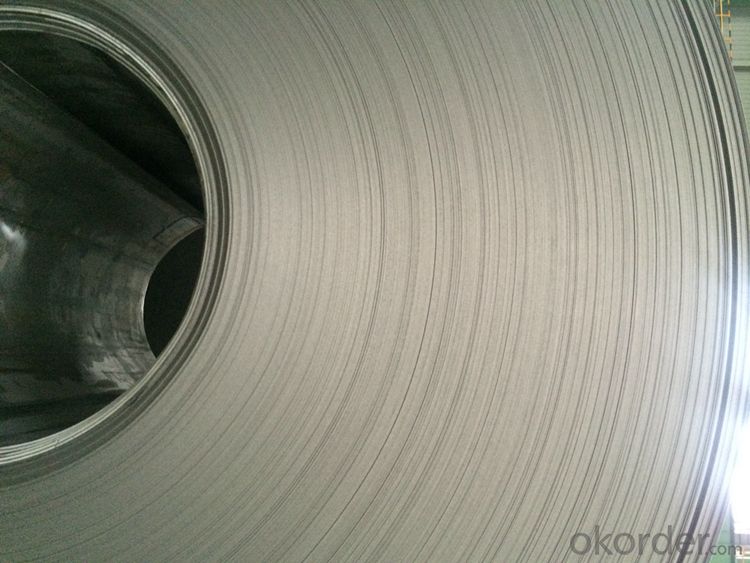
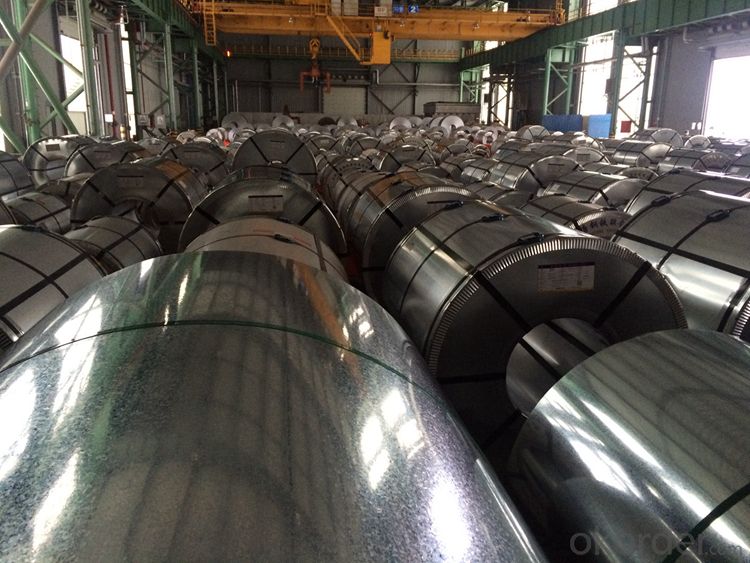
APPLICATION FOR GALVANIZED STEEL COILS:
Galvanized steel products are mainly used in construction, light industry, automobile, agriculture , fishery and commercial industries. They have great advantages:1.it has small harm to the environment and it can be recycled, greatly lighten the stress to the environment.2.it is convenient to process,easy to construct and has good waterproof effect.
FAQ FOR GALVANIZED STEEL COILS:
Q:How to order?
A: Please send us your purchase order by email or fax .or you can ask us to send you a proforma invoice for your order .We need to know the following information for your order.
1) Shipping information-company name, street address, phone number, fax number, destination sea port
2) Product information – Quantity, Specification (steel type, thickness, width, surface finish)
3) Delivery time required
4) Forwarder's contact details if there's any in China
- Q: Can stainless steel sheets be bent?
- Stainless steel sheets have the capability to be bent. This material, known for its versatility, can be molded into different forms and designs, including bends. The capacity to bend stainless steel sheets relies on their thickness and composition. Generally, thinner sheets are more pliable and easier to bend, whereas thicker sheets might necessitate specialized tools and techniques. It is crucial to bear in mind that the bending procedure could potentially weaken the strength and durability of the stainless steel sheet. Therefore, careful thought should be given to the particular application and requirements before embarking on the bending of stainless steel sheets.
- Q: What's the thinnest stainless steel plate in China?
- Performance analysis of stainless steel plate:High temperature oxidation resistance: stainless steel plate has high temperature oxidation resistance, but the oxidation rate will be affected by exposure environment and product form and other inherent factors.Physical properties: the total heat transfer coefficient of metals depends on other factors as well as the thermal conductivity of metals. In most cases, the heat dissipation coefficient of the film, the surface conditions of the rust and metal. Stainless steel keeps its surface neat, so its heat transfer is better than other metals with higher thermal conductivity.
- Q: What is the corrosion resistance of stainless steel sheets?
- Stainless steel sheets are known for their high corrosion resistance properties. This is due to the presence of chromium in the alloy, which forms a protective oxide layer on the surface of the steel. This oxide layer acts as a barrier, preventing oxygen and moisture from coming into contact with the underlying steel. As a result, stainless steel sheets are highly resistant to rust, staining, and corrosion in various environments, including exposure to water, chemicals, and even extreme temperatures. The level of corrosion resistance can vary depending on the grade and composition of the stainless steel, with higher chromium and nickel content generally leading to better corrosion resistance. Overall, stainless steel sheets are widely used in industries such as construction, automotive, and food processing, where durability and resistance to corrosion are crucial.
- Q: What are the different types of stainless steel sheet surface finishes available?
- There are several different types of stainless steel sheet surface finishes available, each with its own unique characteristics and uses. Some of the most common types include: 1. No. 1 Finish: This is the most basic and commonly used finish, also known as hot rolled annealed and pickled (HRAP). It has a rough, dull appearance with visible grain lines and is typically used for industrial applications where aesthetics are not a major concern. 2. No. 2B Finish: This finish is achieved by cold rolling, heat treating, and pickling the stainless steel. It has a smooth, reflective surface with a moderate gloss and is commonly used for applications that require a clean, uniform appearance, such as kitchen appliances and architectural components. 3. No. 3 Finish: This finish is achieved by using progressively finer abrasives during the polishing process. It has a semi-polished, satin-like appearance with visible grain lines and is often used for decorative applications, such as furniture, signage, and automotive trim. 4. No. 4 Finish: This finish is similar to No. 3, but with a finer grain and higher gloss. It is achieved by using even finer abrasives during the polishing process and is commonly used for architectural and decorative applications that require a high-quality, mirror-like finish. 5. No. 8 Finish: Also known as a mirror finish, No. 8 is the highest-quality stainless steel sheet surface finish available. It is achieved by polishing the stainless steel to a highly reflective, mirror-like appearance. This finish is often used for high-end architectural and decorative applications where a premium, flawless finish is desired. In addition to these primary finishes, there are also specialized finishes available for specific applications. For example, a brushed finish creates a textured, brushed appearance by using abrasive belts or brushes against the stainless steel surface. Additionally, there are colored finishes that involve applying a thin layer of color to the stainless steel surface, providing a unique and eye-catching appearance. Overall, the choice of stainless steel sheet surface finish depends on the specific application and desired aesthetics, ranging from basic industrial finishes to high-end decorative finishes.
- Q: What is the thickness tolerance for stainless steel sheets?
- The thickness tolerance of stainless steel sheets can differ based on the particular grade and manufacturing method employed. Typically, the accepted thickness tolerance for stainless steel sheets in the industry spans from +/- 0.005 inches to +/- 0.010 inches. Nonetheless, it is essential to acknowledge that various manufacturers and suppliers may establish their own distinct tolerances. Thus, it is consistently recommended to consult the manufacturer's or supplier's specifications for precise information. Furthermore, certain applications or industries may impose stricter thickness tolerances, and it is imperative to comply with the specific requirements set forth by the customer or industry standards in such instances.
- Q: What is the thickness range available for stainless steel sheets?
- The thickness of stainless steel sheets varies depending on the specific type and grade of stainless steel. Typically, stainless steel sheets are available in thicknesses ranging from 0.4mm to 6.0mm. Thinner sheets are commonly utilized for flexible and lightweight applications, whereas thicker sheets are typically employed for structural purposes requiring increased strength and durability. It is worth mentioning that customized thicknesses can be manufactured to meet specific project requirements.
- Q: Can stainless steel sheets be used for storage tanks?
- Yes, stainless steel sheets can indeed be used for storage tanks. Stainless steel is known for its high corrosion resistance, making it an ideal material for storing various substances, including chemicals, liquids, and gases. It is highly durable, which ensures a longer lifespan for the storage tank and reduces the risk of leaks or contamination. Stainless steel tanks are also easy to clean and maintain, making them suitable for industries such as food and beverage, pharmaceuticals, and wastewater treatment. Additionally, stainless steel is non-reactive, meaning it does not interact with the stored substances, ensuring the integrity and quality of the materials being stored. Overall, stainless steel sheets are a reliable and versatile choice for storage tank applications.
- Q: Are stainless steel sheets suitable for decorative purposes?
- Yes, stainless steel sheets are suitable for decorative purposes. They offer a sleek and modern aesthetic, are highly durable, and can be customized with various finishes and patterns. Additionally, stainless steel is resistant to corrosion, making it a practical choice for both indoor and outdoor decorative applications.
- Q: What drill can drill stainless steel?
- Drilling stainless steel materials, there are two main domestic products: high-speed steel bit, carbide drill. Carbide hollow drill is of high toughness and good wear resistance. It is recommended that you use this material. The price depends on the specifications you need.
- Q: How do you prevent pitting corrosion on stainless steel sheets?
- To prevent pitting corrosion on stainless steel sheets, it is important to maintain a clean and dry surface, avoid exposure to corrosive environments or chemicals, and promptly clean off any contaminants or deposits. Additionally, applying a protective coating or passivation treatment can help enhance the corrosion resistance of the stainless steel sheets. Regular inspections and maintenance are also crucial to detect and address any signs of pitting corrosion early on.
Send your message to us
DX51 Zinc Cold Rolled Hot Dipped Galvanized Steel Coil Sheet Plate Strip
- Loading Port:
- Tianjin
- Payment Terms:
- TT OR LC
- Min Order Qty:
- 50 m.t.
- Supply Capability:
- 20000 m.t./month
OKorder Service Pledge
OKorder Financial Service
Similar products
Hot products
Hot Searches
Related keywords
